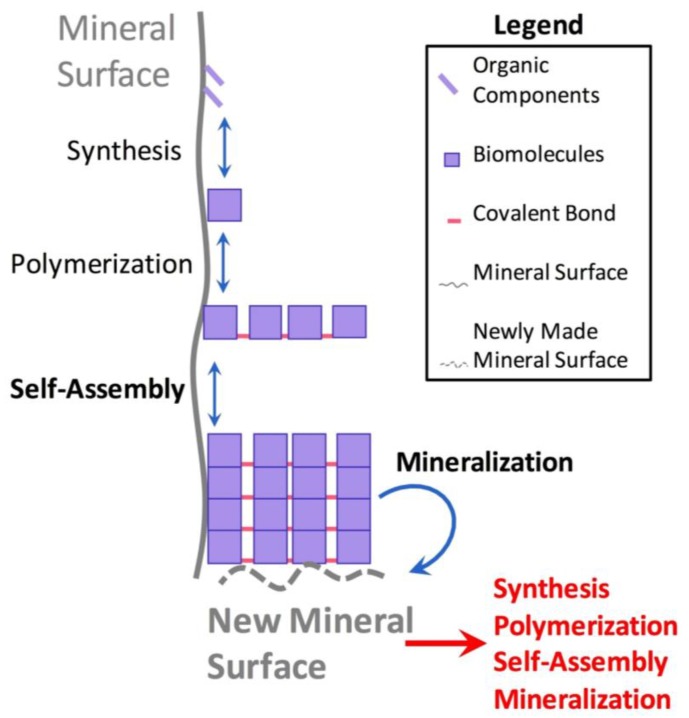Figure 5.
Synergistic cyclical model of mineral-templated self-assembling systems promoting mineralization. Simple precursors of biomolecules adsorbed onto a mineral surface react and produce biomolecules such as nucleotides or amino acids. Then, some of these adsorbed molecules polymerize into polymers (such as peptides or nucleic acids). Given the optimal conditions and mineral surfaces, biopolymers produced then self-assemble into supramolecular structures such as amyloid fibers or primitive nucleic acid “origamis”. Although not shown in the figure, at any stage in the adsorption, polymerization, and self-assembly pathway (which are all reversible reactions), each molecule can also desorb off of the mineral surface. However, certain self-assembled supramolecular structures (whether on or off the mineral surface) have the ability to promote the formation of new minerals, such as peptide nanostructures catalyzing the formation of hydroxyapatite, similar to modern-day biomineralization processes. The newly produced mineral surfaces could then catalyze and template the synthesis, polymerization, and/or assembly of the same structures that allowed its own mineralization, leading to a synergistic cyclical positive feedback loop by which primitive self-assemblies could have affected the mineral composition of early Earth, and vice-versa.

